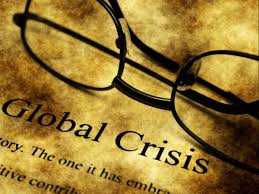WHAT HAVE WE LEARNT IN THE LAST 10 YEARS – POST 2007/2008 FINANCIAL CRISIS?

Ten years on and the financial world continues to grapple with a series of challenges triggered by the global financial crisis (GFC) of 2007/2008. Although financial systems and economies are on the rebound, the trauma from the crisis still lurks in the dark and in the minds of central bankers, policy makers, households, managers, investors, borrowers and companies, alike. Many lessons have been learnt and alternative strategies are constantly evolving, changing the landscape of the financial world, both in theory and practice.
Harvard Business Review discusses how popular economic notions and theories on how we thought our markets functioned and behaved, imploded with the GFC. The old macroeconomic theories came under heavy criticism and central banks, particularly the Bank of England, ushered in newer ideas on market behaviour. George Soros launched The Institute for New Economic Thinking in 2009 with the aim of funding and disseminating unorthodox research into financial market behaviour, the macroeconomic impact of inequality and others.
In practice, industry leaders and regulators believe that while it may be difficult to predict the next crisis, there are clear measures that need to be taken in order to ensure that the obliterating impact of such crisis are limited.
- Building a Diversified Portfolio
According to Franklin Templeton Investments, fund managers need to build a diversified portfolio with a mix of global stocks and bonds that are uncorrelated and are based on investors’ individual goals, risk tolerance and investments timelines. It also suggests that diversified portfolios should be subject to a periodic rebalancing, say quarterly. On the equity side, investments need to be diversified across market capitalization spectrum, industries and geographic regions.
- Staying the Course
In addition to consensus among industry leaders that diversified long-term investments will preserve (Financial Times), some suggest others to have the fortitude to stay the course, be prudent with leverage and have a lending partner, and not just a lending facility. Early and often thoughtful asset allocation analysis is the only tried and true remedy. Don’t let the winds of the markets take you off course.
- Communicate Clearly and Consistently with Investors
One of the best ways to stay the course is to maintain a clear and consistent line of communication with investors. The global financial crisis underscored the importance of this as the crisis prolonged in both depth and duration, testing the nerves of even the most steadfast investors (Financial Times).
- Keeping an Eye on Systemic Risks
One of the fallacies of the pre-crisis world was that if individual banks were able to effectively manage their risks, then systemic risk would be under control. However, in reality, if the system isn’t safe, none of the banks are safe, either. There is a need to look at systemic risk (IESE). Industry leaders (Financial Times) admit that the system had clear signs that mortgage underwriting standards were non-existent which eventually led to the collapse of the entire system.
- Avoid Excessive Leveraging
The Harvard Business Review recognises that financial markets are prone to instability which emanates from uncertainty about the future. However, when this inherent instability is paired with excessive debts, it can only exacerbate the damage a negative economic shock can cause. The Financial Times too reiterates the importance of reducing debt levels and points out that the system is much safer today due to lower leverage ratio compared to pre-crisis period.
- Continue Building Trust
One of the things that were damaged the most during the GFC was trust. Trust among investors, managers and regulators pendulumed wildly from full trust in market forces to trust completely sapping out of the system. Rebuilding trust will dominate the industry’s agenda for the next decade (Financial Times).
- Low Interest Rate Environment-Not Necessarily Comforting Times
One of the misconceptions has been that low inflation and relatively efficient markets will be accompanied by financial stability. This thought is misguided and some industry leaders forewarned even before GFC that a period of economic stability also tends to be a time where agents take on excessive risks, which is what happened in 2008 (IESE).
- Constant Evaluation
Risk management is a critical tool for analysing information and making investment decisions. However, even then it may fall short of completely insulating the system from financial woes. There is a dire need to avoid complacency and the system needs to constantly evaluate itself. Just as risk management technology for 2007 was not adequate for 2017, and that 2017 technology will be inadequate for 2027, we must constantly challenge ourselves to evaluate every input, every line of code and every piece of data — financial or otherwise (Financial Times).
The lessons learned highlighted above are not exhaustive. The system needs major repair work. As the latest Global Financial Stability Report points that the recovery from the global financial crisis isn’t yet complete and vulnerabilities still exist.
Comments